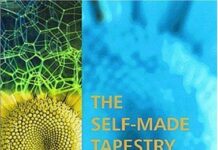
Ebook Info
- Published: 2011
- Number of pages: 312 pages
- Format: PDF
- File Size: 9.34 MB
- Authors: Philip Ball
Description
Patterns are everywhere in nature – in the ranks of clouds in the sky, the stripes of an angelfish, the arrangement of petals in flowers. Where does this order and regularity come from? It creates itself. The patterns we see come from self-organization. Whether living or non-living, scientistshave found that there is a pattern-forming tendency inherent in the basic structure and processes of nature, so that from a few simple themes, and the repetition of simple rules, endless beautiful variations can arise. Part of a trilogy of books exploring the science of patterns in nature, acclaimed science writer Philip Ball here looks at how shapes form. From soap bubbles to honeycombs, delicate shell patterns, and even the developing body parts of a complex animal like ourselves, he uncovers patterns in growthand form in all corners of the natural world, explains how these patterns are self-made, and why similar shapes and structures may be found in very different settings, orchestrated by nothing more than simple physical forces. This book will make you look at the world with fresh eyes, seeing orderand form even in the places you’d least expect.
User’s Reviews
Editorial Reviews: Review Review from previous edition: “Wideranging, intelligent and non-dogmatic trilogy of books.” ―Martin Kemp, Times Literary Supplement 19/03/2010″Philip Ball gives us some very interesting food for thought.” ―Mark Ronan, Standpoint 01/10/2009″Ball has opened a welcome window on a little-understood but thought-provoking aspect of the making of the natural world.” ―Alan Cane, Financial Times 06/04/2009″Fascinating detail.” ―The Economist 07/03/2009 About the Author Philip Ball is a freelance writer and a consultant editor for Nature, where he previously worked as an editor for physical sciences. He is a regular commentator in the scientific and popular media on science and its interactions with art, history and culture. His ten books on scientific subjectsinclude The Self-Made Tapestry: Pattern Formation in Nature, H2O: A Biography of Water, The Devil’s Doctor: Paracelsus and the World of Renaissance Magic and Science, and Critical Mass: How One Thing Leads To Another, which won the 2005 Aventis Prize for Science Books. He was awarded the 2006 JamesT. Grady – James H. Stack award by the American Chemical Society for interpreting chemistry for the public. Philip studied chemistry at Oxford and holds a doctorate in physics from the University of Bristol. His latest book The Music Instinct published in February 2010.
Reviews from Amazon users which were colected at the time this book was published on the website:
⭐I had always considered D’Arcy Wentworth Thompson’s book ‘On Growth and Form’
⭐the best book of its kind, but Philip Ball’s 1st book of his trilogy on nature’s tapestry made clear that so much scientific advances have been made since Thompson’s book was written. All these advances are clearly expounded in this book, and we profit greatly from a newer and more accurate understanding of mechanisms behind nature’s wonderful display of forms. Nonetheless, ‘Shapes’ is still very much in the tradition of Thompson’s book pointing us to the fact that the wonders of nature can be explained by reductive and empirical principles, not needing any magical or supernatural forces.The book is clear, the topics covered are extensive, the explanations and arguments clear and easy to understand, the evidence incontrovertible, and the illustrations plentiful and to the point. The colour plates are well reproduced, but the black and white photographs are not very sharp. It’s a great book to read and to follow up with the other 2 books of the trilogy – ‘Flow’ and “Branches’.
⭐Ball is a remarkable writer, both for the topics he chooses and for the clarity and depth he brings to each. I recommend reading “tapestry” in order (Shapes, Flow, Branches) as the three books started life as one larger book. In any case, having read “Shapes” one is very likely to want to read the others. The basic issue–what are the sources of the visual order (and disorder) we see in the world–is one that engages the realms of art, the natural sciences, and even the social sciences. Only a true polymath can bring off this sort of inquiry, and clearly Ball is one.
⭐I love the way this author uses real life examples to put the flow into the mix and then branches is quite a learning experience, if you wanna learn about the itty bitty , this book is for you!
⭐This is an AMAZING book- for the artist, the philosopher,the mathemetician or the person who marvels at the structure of the world. You will never look at the world the same.
⭐See my other reviews of PB’s books. Avoid them (except the one) like the plague. Use the money to buy cheap balloons at the grocery store, and then release them into the void.FEU
⭐Horrible.
⭐****”If the phrases ‘bicontinous periodic minimal surface’ and ‘reaction-diffusion process’ make you break out in a cold sweat, this isn’t a book for you. If your brain is still working and you’re curious what daffodils and fingerprints, catalytic converters and leopard spots, or soap films and butterfly wings may have in common.” — A witty reviewerPatterns are dominant in nature’s dramatic disclosure, from the clouds hovering in the sky, to petals disposition in flowers. Where do the patterns we observe come from? Scientists have found that there is a pattern-forming tendency inherent in the basic structure and processes of nature, so that from a few simple themes, and the repetition of simple rules, endless beautiful compositions can evolve. From the patterns of spider’s webs to the curl of a ram’s horn, Philip Ball examines the genesis and antecedents of the shapes and forms we observe in physical and biological world. In the end, he concludes, nature is an opportunist. One of Ball’s heroes, Sir D’Arcy Thompson, a pioneering mathematical biologist, remembered for his book, On Growth and Form, may have inspired him to write his book ‘Forms’, that contains a lot of fascinating detail about various physical, chemical and possible evolutionary processes at work.He wonders why do honeycombs have a hexagonal shape? Why are the flowerets in a sunflower arranged in a clothoid or double spiral, a curve whose curvature grows with the distance from the origin? Most scientists would rather call on Charles Darwin to elucidate on these patterns as a random product of evolution, emerging from innumerable variations of possible shapes through natural selection. In the 18th century René de Réaumur, a French scientist, proved that the hexagon guarantee that worker bees fill the cells space efficiently while minimizing the total cellular wall area. In other words, hexagonal cells allow bees to focus on maximizing honey production and expend the least amount of energy making wax. Darwin used the beehive as an example of evolutionary progress, while Thompson argued for a less complicated physical explanation, arguing that natural selection need not be taken into consideration at all.One of a trilogy of books exploring the analysis of patterns in nature, British writer and science populizer Philip Ball, examines how shapes from soap bubbles to honeycombs can evolve. He uncovers patterns in growth and forming in the four corners of the natural world, explaining how these patterns are formed. This book will make you take a closer look at nature with fresh eyes, and recognize amazing shapes and forms in places you would least expect. Ball is an inspired science writer, gifted to examine divergent natural phenomena and link different intellectual and academic perspectives of relative significance, weave them into a an orderly, logical, and aesthetically consistent tapestry that will marvel the professional and the lay reader alike. The writing is both fascinating and engaging, with nice informative illustrations.
⭐Ball takes a logical approach to explain the physical laws that govern shapes, and the evolutionary basis for the shapes. I believe the physical laws are ordered and our job as scientists is to uncover the mysteries and find the discoveries that are already there. It’s like Columbus didn’t discover America. It was always there, the Europeans just didn’t know it. The “Intelligent Design” and Creation people are right in that God just might be responsible for complicated shapes, but they have God intervening late in the cycle. He established the overall physical laws that living things follow to get their shapes. He didn’t intervene at the last minute to make a complex spiral sea shell. This approach reconciles the Science vs. God conflict very nicely. The Creationists have the right idea generally, but are too pushy in their approach. Besides, if I was God, I wouldn’t waste time diddling around with every little plant and animal, I would be more efficient and lay down the regular physical laws they should follow. Ball helpls understand the efficient God, not the detail freak God.
⭐A wonderful cornucopia of thought provoking stuff on how nature’s patterns inform us.
⭐Excellent purchase
⭐With numerous beautiful figures as illustrations, this book presents the many ways nature exploits pattern formation. Many forms and shapes in nature are caused by conditions of growth and forces in the environment. There is no doubt that mathematics is the natural language of pattern and form!Some combustion, corrosion reactions and biochemical processes generate oscillations and wave patterns. Even for plants, there are distinct patterns in the arrangement of leaves around plant stems.Spots and stripes are the most common marking patterns on animals. The patterns on butterflies and moths are extremely rich. The homes of social insects are marvellous; wasp nests are typically more varied than honeybee combs. The natural hexagonal pattern of honeycomb is fascinating; it lets the bees economize on wax. Living organisms seem to exhibit patterns for instance in the distribution of hairs on human skin and the spacing of feathers in birds.
⭐My interest in the natural wonders drew me to this little book. I was delighted with and it tanterlized me further by revealing there are two more to the series! I’ll have to sweet talk my wife into buying them for me
⭐I love this series of books on the biomimicry.
Keywords
Free Download Shapes: Nature’s Patterns: A Tapestry in Three Parts in PDF format
Shapes: Nature’s Patterns: A Tapestry in Three Parts PDF Free Download
Download Shapes: Nature’s Patterns: A Tapestry in Three Parts 2011 PDF Free
Shapes: Nature’s Patterns: A Tapestry in Three Parts 2011 PDF Free Download
Download Shapes: Nature’s Patterns: A Tapestry in Three Parts PDF
Free Download Ebook Shapes: Nature’s Patterns: A Tapestry in Three Parts


